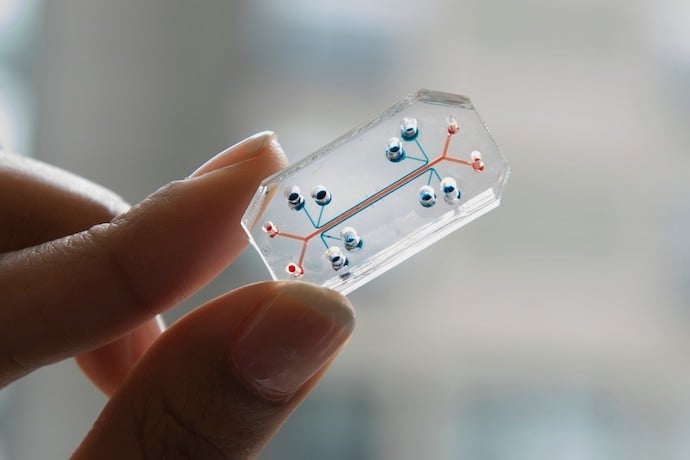Creating new medications and gaining a better understanding of the human body requires a lot of work by scientists. This research can be particularly hard and take a long time if it depends on human or animal test subjects. The recent development of tissue chips is making this process simpler and taking animals out of the equation.
Liver on Chips (blech!)
Also known as organs-on-a-chip, these small devices are made up of actual human cells and mimic the behavior of individual organs or systems in the human body. They may look more like a small clear circuit board than a lung or heart, but they are able to get very close to the behavior of actual organs.
The chips have three important properties: They hold tiny channels that imitate the systems in our body that bring in blood and nutrients and take away debris. They are 3 dimensional, just like the human body They contain many different types of cells because human organs are not made of just one type of tissue
By measuring how these complex chips respond to different drugs, scientists can use them to test new medications. According to the National Institutes of Health (NIH), these chips are showing the potential effects of drugs on various human tissues in a faster and more effective way than current methods. This is particularly helpful in weeding out drugs with side effects that typically would not show up unless tested on humans.
Space makes haste
The NIH started funding research into tissue chips back in 2010 and quickly saw their potential. After the NIH’s initial success, they decided to take a big leap: sending tissue chips into space.
The environment of space is not kind to the human body. From vision changes to bone and muscle loss, microgravity can cause some strange responses in humans. Some of these changes are similar to the aging process, only they occur much faster in space than on Earth. While that’s not ideal for astronaut health, tissue chips take advantage of this simulated accelerated aging process.
Thanks to the Tissue Chips in Space program, many scientists had the chance to launch these devices into orbit. They help scientists learn how different organs and bodily systems respond to spaceflight and test out drugs much faster than is possible in Earth’s gravity.
In space, researchers can observe changes in a matter of days or weeks as opposed to months or years on our planet. These tested drugs could be used to help future astronauts resist changes caused by microgravity as well as benefit people back on Earth. The chips sent to space have already studied heart health, joint injuries, the immune system, and much more.
Scientists from the Cardinal Heart experiment even confirmed the cells in their heart tissue chips changed as expected in space. They launched a second experiment, Cardinal Heart 2.0, that tested treatments to prevent these changes from happening.
Tissue chip experiments are ongoing with lots of potential to come.
Learn More
Organ On a Chip Technology
https://www.criver.com/eureka/coming-age-organ-chip-technology
High Tech Alternative to Animal Testing
https://www.wired.com/story/the-us-just-greenlit-high-tech-alternatives-to-animal-testing/
Living tissue on a Silicon Chip
https://www.voanews.com/a/scientists-put-living-tissue-on-silicon-chips/2470763.html
Lung on a chip
https://en.wikipedia.org/wiki/Lung-on-a-chip

